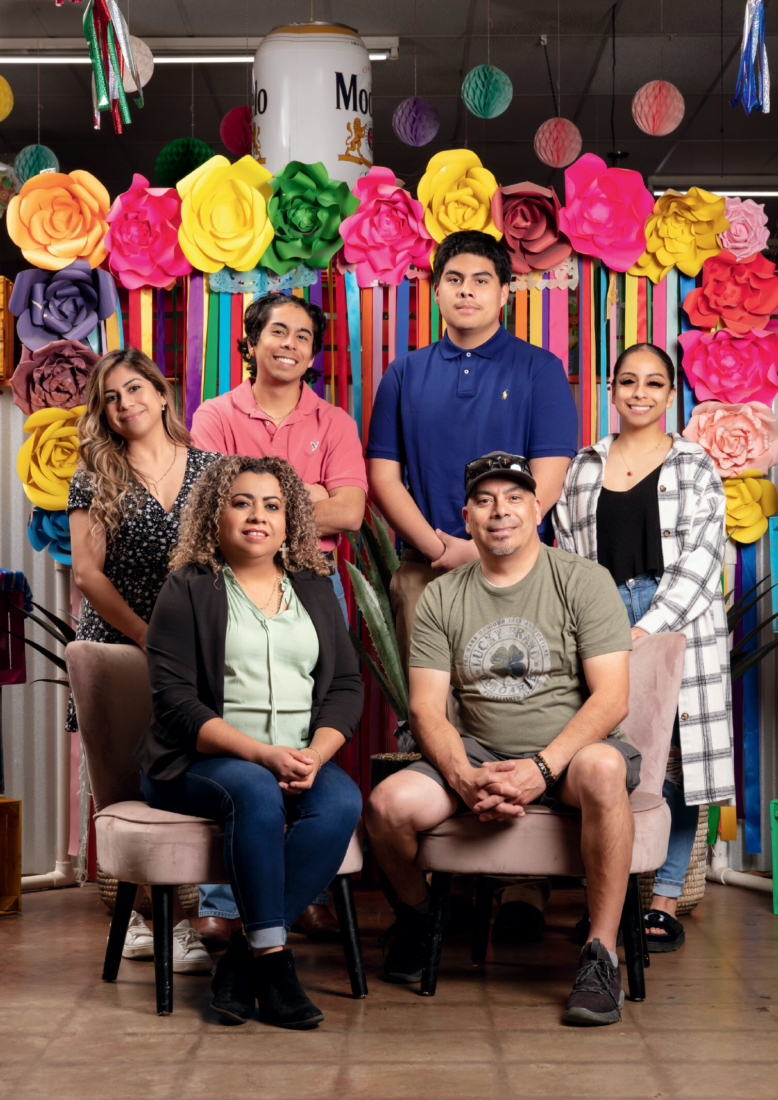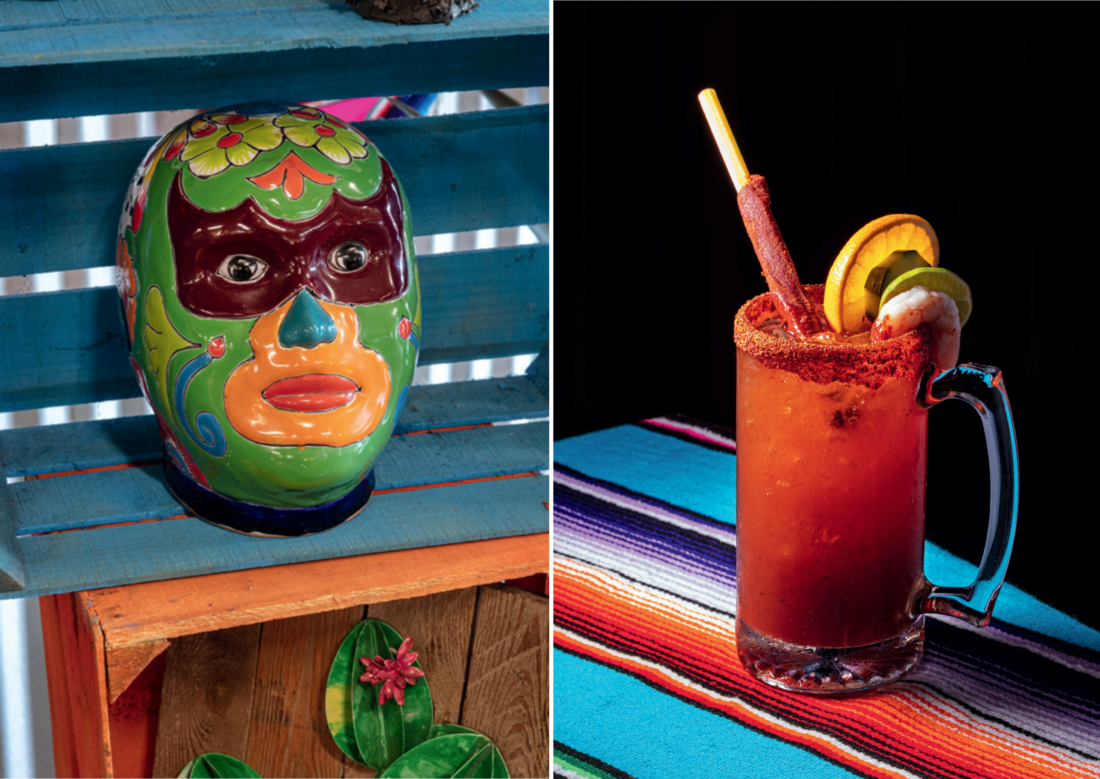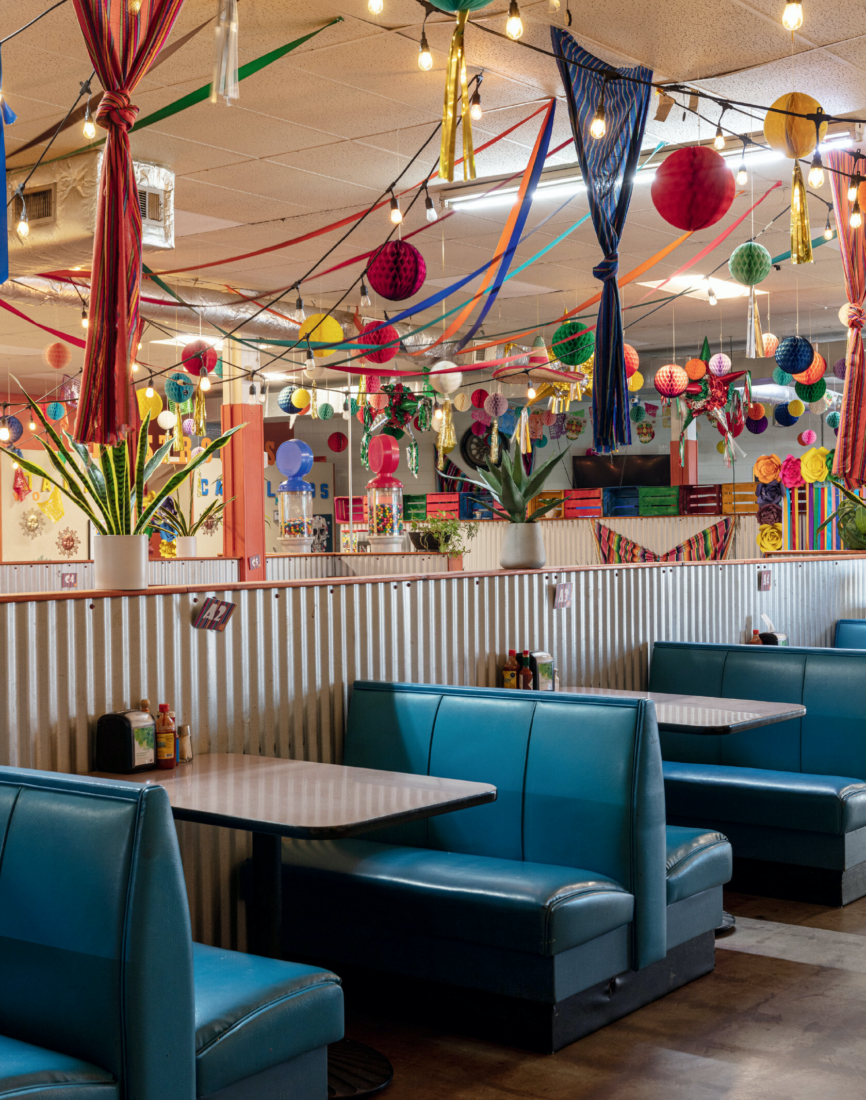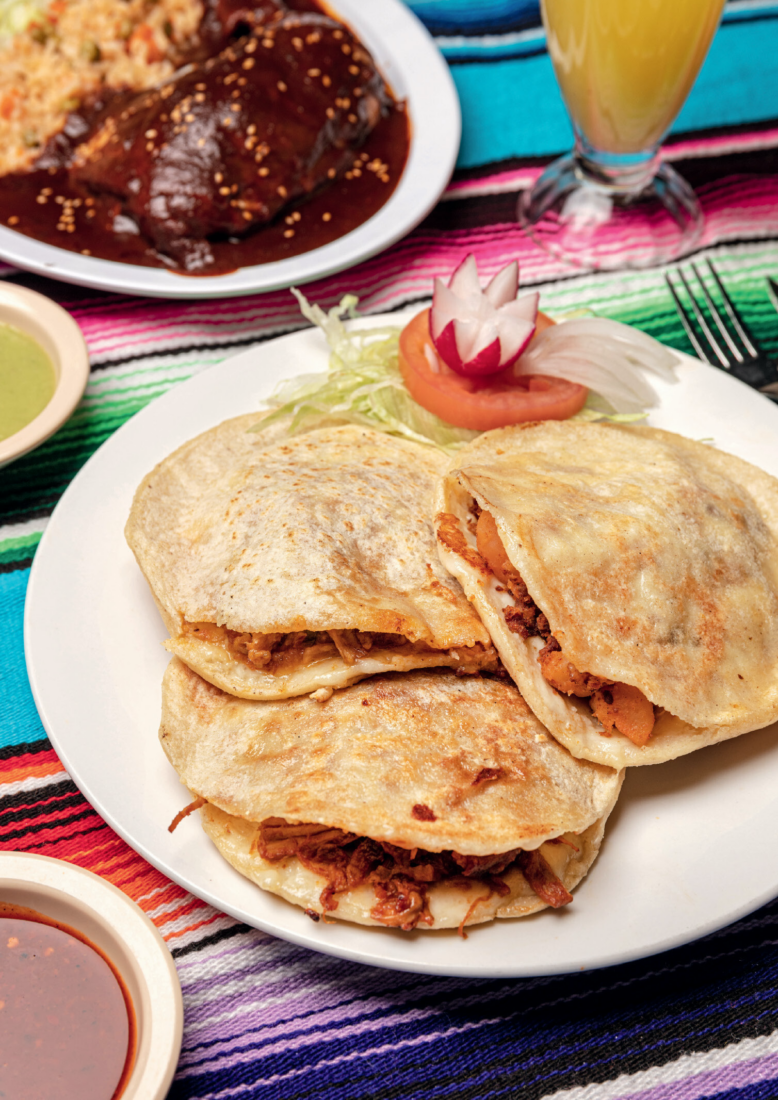The smell of nixtamalized corn from the next-door tortilleria swirls the parking lot at Gorditas Paty in the southwestern suburbs of Little Rock. Corrugated tin wainscoting lines the walls of this bright and beautiful restaurant, the second of four locations owner Patricia Alonso wants to open in Arkansas. Sombreros, piñatas, and a rainbow of banners made from perforated tissue paper hang above a pastry case stocked with the domed Mexican sweet breads called conchas. Near the open kitchen, a roofing crew in neon hoodies gathers at a serape-draped table beneath a tapestry portrait of Frida Kahlo.
I sip coffee from a terra-cotta mug as Alonso, who opened her first Gorditas Paty in Little Rock in 2016, slips into a booth opposite me. Using a translation app, we text-to-talk about Aguascalientes, the state in central Mexico where she learned to cook at her family’s food stall in the central market of the capital city, also called Aguascalientes. Alonso talks about Little Rock, too, a city she says is green and pretty and full of kind people. She prefers living here to Los Angeles, where she first immigrated and where she worked in a garment factory pulling loose threads for ten cents a shirt.
Waiting for the next text to ping, I bite into a gordita stuffed with crumbly chorizo bound by lumps of farm cheese. Made from corn flour formed into a pocket bread, gordita translates from Spanish as “chubby.” Alonso’s gorditas—baked on a comal until they are chewy and crisp, stuffed with twenty-plus fillings from pork ribs to chicken mole poblano—translate as delicious. Especially when squirted with the chile-spiked chimichurri mayonnaise she makes. Over her shoulder I watch that roofing crew spoon into bowls of posole rojo, a brothy soup of hominy and roasted pork and ancho chiles. (Alonso also serves a great posole verde, colored with tomatillos and thick with shredded chicken.) Through the steam that rises from their bowls, I see smiles. I hear laughter.

I got interested in Little Rock’s burgeoning Mexican food scene after learning that a Mexican consulate has operated here since 2007. Set in a squat building at the rear of the Town & Country shopping center, the consulate shares a parking lot with a drive-through taqueria and a vendor who sells soccer jerseys and wooden Jesus-on-the-cross sculptures. Here, immigrants come to file the paperwork that marks deaths and marriages and seek legal assistance. Over the past decade, that work has turned more intense.
The Mexican population boom in Arkansas began in the early 1990s as the poultry industry expanded. Today around 230,000 Hispanic people live in the state. In the suburbs of Little Rock, strip-mall evangelical churches flash bilingual messages of salvation. On the artery roads that funnel traffic from town, new taco trucks park beneath the overhangs of old gas stations. Red and green banners, printed with SE HABLA ESPAÑOL, flap in front of car dealerships. Second- and third-generation Southerners of Mexican descent now run wealth management companies and photography studios and dream big dreams like Alonso.

In November of last year, I began trading restaurant recommendations with José Aguilar-Salazar, deputy consul for Mexico in Little Rock. Patient with my questions, and with my tendency to slip into French when trying to speak Spanish, he texted pictures of La Regional Panaderia, a bakery that turns out gingerbread pigs and gelatin cakes. And Taqueria Gordy, a truck that cooks down a great lamb guisado. I reported back from Mercado el Valle, a family grocery and butcher shop that operates in an old bank branch. And from Taqueria el Palenque, a strip-mall restaurant that serves shrimp-and-avocado cocktails in chilled fishbowl goblets. Along the way, we both fell for Gorditas Paty, whose second location, on Colonel Glenn Road, is a mile from his office.

Just one Mexican market operated in Little Rock when Alonso arrived in 1997, she says. Only two restaurants served something other than hard-shell tacos and the local cheese dip that’s so beloved among Anglos that Little Rock celebrates the stuff with an annual Cheese Dip World Championship. Not long after, Alonso began cleaning houses during the week. To pick up extra money, she cooked for friends of her husband, Juan Rodriguez, who worked construction with him. “I was not afraid,” she tells me, speaking of her willingness to take a chance, and of the confidence she carried forward from Aguascalientes, where she began cooking at age twelve in her grandmother’s kitchen.
From Hilaria Martinez, Alonso learned to make that chicken mole poblano, sweetened with chocolate, thickened with ground almonds, and scattered with sesame seeds. In addition to stuffing it into gorditas, she serves it as a quarter-chicken platter with rice and refried beans. Working that market stall, Alonso also learned to think of herself as an entrepreneur. Her husband now works with her, decorating and maintaining the family restaurants, and all four of their children hold part-time jobs here. As Alonso talks through her dream to open new locations, one thirty miles away in Conway and another up near the Oklahoma border in Fayetteville, she leans forward in the booth. Norteño music, heavy on the accordions, plays from tripod-mounted speakers. Listening to her, it becomes clear that, though she sells more gorditas than anything, the mole-dressed chicken platter, which the deputy consul and I both love, is a kind of family dowry. “This is where we began,” she says as I trace my finger through a puddle of sauce. “Now I know where we’re going.”








